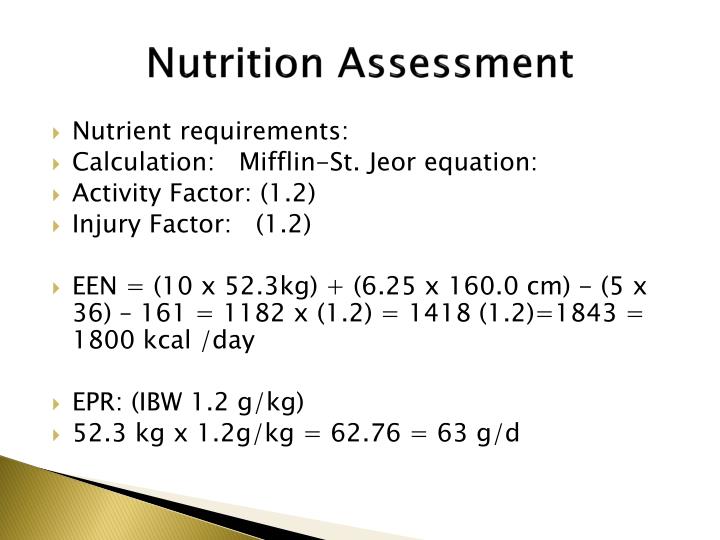

Fat-free mass (FFM) was the best single predictor of REE (R2 = 0.64): REE = 19.7 x FFM + 413. The Harris-Benedict Equations derived in 1919 overestimated measured REE by 5% (p less than 0.01).


The inclusion of relative body weight and body-weight distribution did not significantly improve the predictive value of these equations. Simplification of this formula and separation by sex did not affect its predictive value: REE (males) = 10 x weight (kg) + 6.25 x height (cm) - 5 x age (y) + 5 REE (females) = 10 x weight (kg) + 6.25 x height (cm) - 5 x age (y) - 161. For Women : 10 x weight (kg) + 6.25 x height (cm) 5 x Age 161. Jeor derived this formula to find the Basal metabolic rate: For Men : 10 x weight (kg) + 6.25 x height (cm) 5 x Age + 5. Multiple-regression analyses were employed to drive relationships between REE and weight, height, and age for both men and women (R2 = 0.71): REE = 9.99 x weight + 6.25 x height - 4.92 x age + 166 x sex (males, 1 females, 0) - 161. The amount given is the total of the two and should be, which estimates your maintenance level. Normal-weight (n = 264) and obese (n = 234) individuals were studied and REE was measured by indirect calorimetry. Jeor equation takes into account your weight, height, and age remember we listed these factors above Gender is. A predictive equation for resting energy expenditure (REE) was derived from data from 498 healthy subjects, including females (n = 247) and males (n = 251), aged 19-78 y (45 +/- 14 y, mean +/- SD). My general recommendation is to use the Mifflin-St Jeor equation if you have a calculator to do the heavy lifting for you (like the Legion BMR Calculator). To calculate your basic burn, the Mifflin St.


 0 kommentar(er)
0 kommentar(er)
